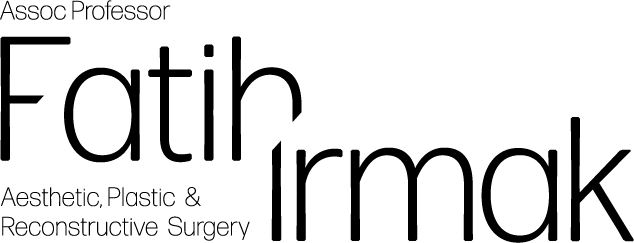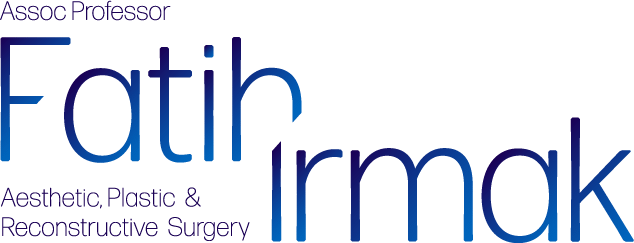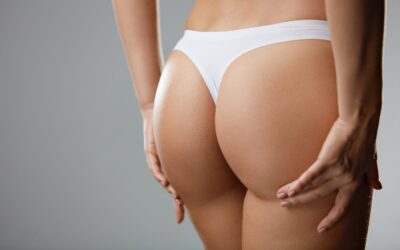Rhinoplasty is an indispensable part of a beautiful face. Rhinoplasty, which constitutes the most special surgery group in the field of aesthetic surgery, is called rhinoplasty in medical language. Rhinoplasty surgery is applied to give a new shape to the nose. The tip of the nose can be raised and lowered, the tip of the nose can be thinned and sharpened, or vice versa thickened, if there are curvatures to the right and left in the nose, it can be corrected, if the back of the nose is sunken, it can be plumped, if it is humped, the excess can be removed, if the nostrils are large, they can be reduced, if there is asymmetry, it can be corrected. In addition to problems related to the shape of the nose, if there are internal cartilage and bone curvatures called septum deviation and breathing difficulties due to this, septum deviation surgery is performed together with rhinoplasty surgery and breathing relief is provided. The ideal rhinoplasty should not only give the nose a natural shape in harmony with the face, but also relieve breathing.
Who is suitable for rhinoplasty?
Rhinoplasty can be performed from the end of the developmental age when the shape of the nose takes its final form. This corresponds to an average age of 17-18 years. Rhinoplasty surgery can be applied to people with nasal deformities from this age. In addition to completing the physical development of the surgery candidate, he/she should also have completed his/her personality development. People whose personality is not yet fully established or who have personality problems are not suitable for surgery. The person who will undergo nose surgery should have the capacity to perceive the facts correctly and should not have unrealistic expectations. It may cause disappointment in dreamers, for example, in people who want their nose to resemble a person they admire. Because everyone's face and nose are different, not every nose model for every face.
Nose Examination
The most important part of the surgical planning is the design of the nose model together with a detailed examination. The examination covers both the external appearance of the nose and the airways inside the nose. The external examination evaluates the structure of the skin, bone, cartilage shape, symmetry and the position of the nasal tip. In the internal examination, it is evaluated whether there is curvature and growth in the inner bones and cartilages, which we call septum deviation, which causes breathing difficulties such as nasal congestion, the condition of the nasal flesh, and whether there is growth, if any.
Ideal Nose Design
Before rhinoplasty, a personalized computerized design must be made to determine the nose model that will suit your face. The general shape of your face is taken as basis for the design of the nose shape suitable for your face. It is necessary to create a nose model that is compatible with the shape of the forehead, cheeks, lips, chin and in accordance with the golden proportions of the face. The most ideal nose is the nose that is in harmony with facial features and looks natural at the same time. Natural appearance is the most important factor in planning the surgery. Believing that natural appearance should always be prioritized in nasal shape designs, I make personalized designs. After a good nose surgery, the nose should be both beautiful and the surgery should not be understood by others. When designing the ideal nose, elegance in women comes to the forefront, while in men, it should be considered to suit the character of masculinity.
Nasal Congestion
The cartilage between both nostrils and the partition that turns into a bone structure as it deepens is called the septum. Deviation of the septum to the right or left is called deviated septum. Most people have a deviated septum. The majority of people with deviated septum are not aware of this condition. Deviation becomes evident either when it causes nasal congestion or when it creates a curved appearance when viewed from the outside. If there is deviation, one of the airways inside the nostrils narrows while the other is wider. This inequality is reflected in the amount of air passing through the nostrils. More air passes through the wider side and less air passes through the narrower side. In order to balance the air passage, the body begins to enlarge the nasal flesh called concha on the wider side. Over time, obstruction occurs on both sides. All these problems that may be encountered during the internal examination of the nose should be identified and included in the surgery plan. Do not forget that a good rhinoplasty should also ease breathing.
Nose Surgery
Rhinoplasty surgery is an operation that should be performed under general anesthesia. All surgeries requiring general anesthesia are performed in an operating room environment in a hospital with appropriate equipment. The duration of surgery varies between 1 and 4 hours depending on the size of the problem in the nose. The surgeries I perform usually take about 2 hours unless there is a very big problem. During the operation, the bones and cartilages are shaped according to the model determined in the design. Accordingly, if there are excess bones and cartilages, they are removed, and if there are deficiencies or pits, they are filled with bone and cartilage pieces. In rhinoplasty, each surgeon has his own unique technique that he is used to. I never break bone structures while shaping them. Since shaping the bones by breaking them causes extra damage, it increases complaints such as postoperative pain, swelling and bruising. However, shaping the bones by cutting and shaping the bones with thin, precise chisels, almost like a sculptor does, increases the quality of the surgery, prevents the emergence of unwanted surprises by making the surgery more controlled, and at the same time minimizes pain, swelling and bruising. In addition, no tampons are placed inside the nostrils at the end of the surgery. In this way, it is possible to breathe comfortably through your nose after surgery. At the end of the surgery, I place a plastic mold on the outside to maintain the shape given to your nose. This mold stays in your nose for 1 week.
After Nose Surgery
The postoperative period will be quite comfortable, you will not feel much distress that you have had surgery. There may be mild pain that most people can easily tolerate, and it can be easily relieved with painkillers. If you feel well, you can return home in the evening of the same day or you can spend the night in the hospital if you want to rest. You will spend the recovery period on your feet. Bed rest will not be necessary. You can go out and walk around during this time. There will not be much swelling and bruising around the nose and eyes. The swelling may increase slightly for the first 1-2 days, then it will decrease rapidly and disappear within 1 week. If bruising has occurred, it will also disappear completely within 1 week. After 1 week, when the plastic mold in your nose will be removed, all swelling and bruising will have resolved and you can return to your normal life as if you have never had surgery. It takes at least 6 months for the shape of your nose to fully settle, you will see its true shape after at least 6 months. In the meantime, in the first months, you need to protect your nose from impacts, sunlight, and use lenses instead of glasses.



